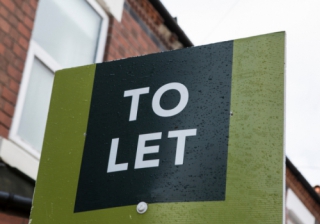
In fact, the average home across the UK has risen in value by 13%, or £29,000 since the start of the pandemic, taking the average value to just under £250,000. With triple the number of tenant enquiries to rental properties available, stock shortage is leading to higher rentals and bidding wars.
With some landlords opting to exit the market, there are fewer rental properties available and asking rents are naturally rising. The prospect of moving has been made more challenging for tenants, with searches taking longer, prompting many tenants to stay put in their existing property for longer – a phenomenon dubbed the ‘Great Grounding’. Indeed, 18% of landlords say their average tenancy length has increased over the past year.
Industry data from TwentyCI and Rightmove shows just how different the market was early this year compared to the same period last year:
In Q1 2021, there were 56,170 new rental listings nationwide. This dropped by 9% to 51,411 in Q1 2022
Average rents are also up on Q1 2021 by more than £150 per month, as demands increase and supply dwindles. Average rental cost has increased from £1,311 for Q1 2021 to £1,471 for Q1 2022
National average rents outside of London hit a new record of £1,088 per month, rising from £982 last year, while average rents in London hit a new record of £2,193* in Q1 2022
Allison Thompson, LRG’s National Lettings Managing Director, says: “There is a ‘perfect storm’ happening in the lettings market right now caused by multiple factors. The reality is that tenants need landlords now more than ever to keep people and the property market moving. Legislative changes combined with a buoyant housing market have meant that a number of landlords have chosen to leave the sector. For the tenant, this means that available properties are likely pricier than they were previously, and the more affordable rentals are in high demand.
“We recognise that it’s a challenging market for tenants looking for new homes. The easing of lockdown and the trend towards remote or hybrid working has spurred a lot of people to want to move, some back to urban areas, where they can enjoy proximity to transport links and local amenities, and others to more rural or seaside locations. But many tenants who may have looked to move in the coming months have instead decided to stay put to wait out the storm.
"With the rising cost of living and increased demand for rentals putting some people off moving entirely, again there is less churn in rental stock. And so the cycle continues. As a result, we’re seeing the ‘Great Grounding’, with people unable to move or choosing to stay in their existing rental property for longer, to avoid the risk of not being able to find a new home or paying more elsewhere.
Alison concludes: “Of course, for many looking for a new home, staying put, or ‘grounded’, is simply not an option. But without new or returning landlords, the rental market could remain turbulent for more time to come. We encourage landlords to consider the significant long-term benefits of buy-to-let and are excited by the potential in new areas such as those surrounding the new Elizabeth Line, as well as locations near to sporting venues thanks to the upcoming summer of live sport! If the rental market moves with the desires of tenants, it can create the perfect midground between supply and demand, easing stress for many.”





